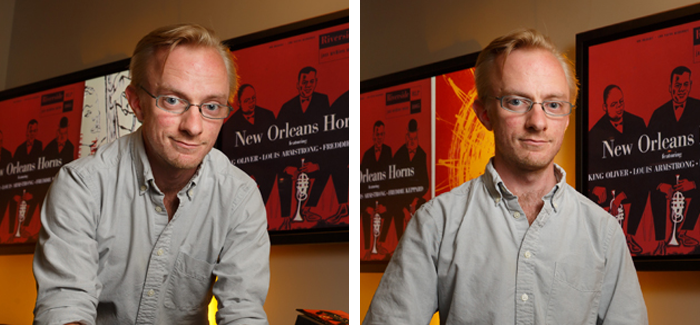
PhD student Christopher Dingwall, AM’06. (Photography by Jason Smith)
“A certain messiness” marked the halting evolution of racist imagery in the decades after slavery’s abolition.
The contrast is so striking because everything else is so much the same. Two sheet music covers for the ragtime number “The Darktown Strutters’ Ball” show a dance floor thronged with African American couples. The colors are almost identical. But while one image is neutral, with figures that are little more than silhouettes, the other portrays the dancers in stark racist caricatures. Both covers were printed in the same year, 1917, and they represent, says history PhD student Christopher Dingwall, AM’06, “a certain messiness” in the evolution of racial imagery during the early 20th century. From decade to decade, things got better: mass culture’s depiction of African Americans became less racist—and blacks gained more control over how they were portrayed—but that change was halting and slow.
Dingwall’s dissertation, which he calls “Selling Slavery,” focuses on why and how images of slavery lived on in everything from literature and cinema to commercial art and children’s toys during the decades after abolition. “Why were Americans so interested in seeing images of slavery, an eradicated past, in the very heart of the new modern culture?” Dingwall asks. “What did the juxtaposition mean for them; how was it translated into economic and cultural value?” Dingwall’s research concentrates on the period from 1876 and 1920. He came across the sheet music covers, along with jazz and ragtime album covers spanning the 20th century, while organizing an exhibit that ran late last year at the library’s Special Collections Research Center. “The presentation of black music is a good index,” he says, “for seeing a larger transformation of racial imagery in commercial art.”
